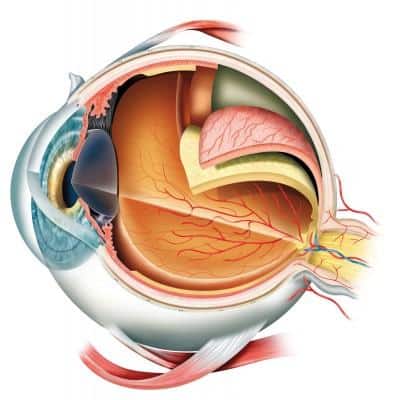Among the many characteristics that make our state of Arizona unique is its variety of land elevations. For example, Yuma in the southwest sits only 163 ft. above sea level. Elevation in the Phoenix valley averages 1,000 ft. above sea level; height in our mountain regions, which include Flagstaff and Show Low, can soar to over 7,000 ft. While this variety of elevation gives us our beautiful landscapes, it also poses a potential risk of which anyone undergoing retina surgery needs to be aware. To understand why let’s back up a few steps.

What, exactly, is the retina?
The retina plays a key role in our ability to see. Located inside the back of the eye, it consists of multiple layers of specialized nerve cells called photoreceptors. These cells sense the light that enters the eye and convert it to impulses that travel to the brain resulting in the amazing images we see. Like any part of the body, the retina is susceptible to certain conditions and diseases that in some cases may require surgery.
A vitrectomy: the gas bubble “cast” for your eye
To perform surgery of the retina, eye surgeons often rely on a procedure called a vitrectomy. During a vitrectomy, the jelly-like substance that fills the eye, called the vitreous, is removed. This gives the surgeon access to the parts of the retina he or she needs to fix.
In some cases of vitrectomy surgery (especially retinal detachment, macular holes, and some types of diabetic damage), it is necessary to secure the retina flat and in place, so it can heal properly. One of the most effective ways to do this is to inject into the back of the eye a bubble of medical-grade gas specifically designed for this purpose. This gas bubble acts like an internal “cast”, like a cast on a broken arm that holds it in place as it heals.
How altitude after a vitrectomy poses a risk:
In order to keep the gas bubble, and therefore the retina, where it needs to be, post-surgery patients are usually instructed to keep their head in a certain position for several days. The body eventually absorbs the gas and replaces it with clear natural eye fluid.
However, while the bubble is still in the eye, patients should not travel in an airplane or to a land elevation that is higher than the area where they had surgery.
Either of these increases in altitude could cause depressurization of the gas bubble, which in turn would make it expand. Such an expansion can put excess pressure on the structures of the eye, leading to pain, damage, and loss of vision. The vision loss can be permanent.
Preparation for a vitrectomy
Because of this potential danger, it is best for patients whose retina surgery requires placement of a gas bubble to have the procedure done in a location at or very near the elevation at which he or she will reside postoperatively. This is easily accomplished if the surgeon has access to very specialized facilities in more than one location.
If he or she only uses an eye surgery center in the valley, for example, patients who live at higher elevations would have to travel to the valley for surgery and make arrangements to remain there for their entire postoperative period. In contrast, undergoing surgery conveniently close to home not only eliminates the risk of an expanding gas bubble upon returning back to elevation but also is less expensive and less cumbersome for the patient.
Other options for surgery
Medical silicone oil is sometimes used as an alternative to a gas bubble for keeping the retina in place following surgery. This approach does not require travel restrictions. However, the oil does not dissolve on its own, which means a second surgical procedure is required to remove it once the retina is stable.
There are a few situations when the use of silicone oil is perfectly appropriate and medically indicated. However, because a required second surgery would introduce its own risks, inconvenience, and expense, it is best avoided if possible.
Jordan Graff, MD., of Barnet Dulaney Perkins, elaborates on traveling after retina surgery: “Whether a gas bubble will be used as part of retina surgery and where the surgery will be performed are two very important issues that northern Arizona patients and their eye doctors should discuss. Be sure your surgeon has all of the best equipment, techniques, and technology available in all parts of the state.”

